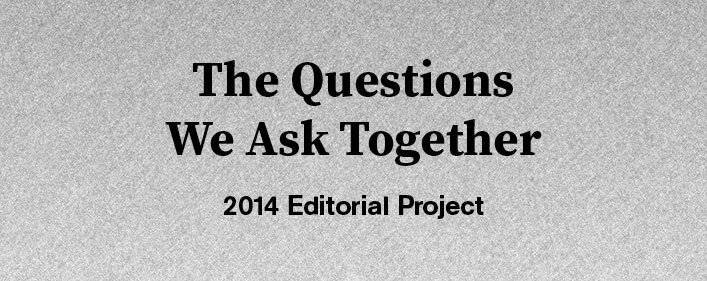How can institutions support or facilitate social practice art?
Maria Hupfield working on the collective art project “Felt Foliage” with Wave Hill visitors in 2013.
Art that engages with the public directly through social practice strategies can be very appealing to an institution as a way to reach new audiences. Because social engagement differs from the traditional loan or commission of a new work for exhibition, the factors to consider and issues to navigate may be unfamiliar to an institution. Planning for a successful project that is generated by an artist creates a large number of unknowns that need to be navigated.
- All parties must be clear about the project goals. It is possible that the goals for the artist and the institution and other collaborators might not be aligned exactly; be prepared to understand and recognize this difference.
- Approach each other with clarity about the expectations. Recognize that there is an evolutionary process inherent in the project. These unknowns will be addressed between the proposal and the realization.
- Be clear about the roles. What is the institution providing and what does the artist need? What are the responsibilities? This is particularly important with regard to reaching out the community. Is the institution the bridge? Is the artist forging new connections? In either case, how is this being facilitated, and by whose voice? If the institution is the bridge, are the mechanisms, including staff, in place to be successful?
- The institution typically directs its message to the world at large. What happens when the artist project might direct a different type of message or use a different syntax? Recognize that if the artist project creates a new dynamic for communication. Patience and willingness to try new things is particularly important.
- Open communication between the artist and the institution is essential. Check in along the way. Are things working out as anticipated? Talk about corrections or adjustments that might be necessary. Stay open minded––keep the internal dialogue active.
- The artist must be clear about what is expected of the audience/public/community members who might be enlisted as participants. What’s involved in terms of time and talent? When applicable be clear with participants about know what is expected of them. Let them know how their ideas/involvement will be used in the project.
- When the institution is reaching out to participants, these are often loyal constituents who value and trust the institution. The artist should treat this interaction with respect and recognize the bond of trust offered by the institution.
- The merit of direct interaction between the public and artist can be tremendously rewarding to everyone. Keeping the focus on the participant, audience, community, can be a helpful way to move forward with planning and implementation.
About the contributor: Jennifer McGregor is the Senior Curator at Wave Hill a public garden & cultural center overlooking the Hudson River in the Bronx. She organizes adventurous exhibitions that explore nature, culture & site, such the upcoming Prickly, Tender and Steamy: Artists in the Hothouse, and Gregory Crewsdon: Fireflies. Throughout her career she has worked with non-traditional public spaces, diverse audiences, and amazing artists. As the first Director of the New York City’s Percent for Art Program in the 1980s, she implemented the program guidelines and launched the first sixty projects, blazing the way for artists to work with city agencies and communities who had never engaged with artists. wavehill.org
